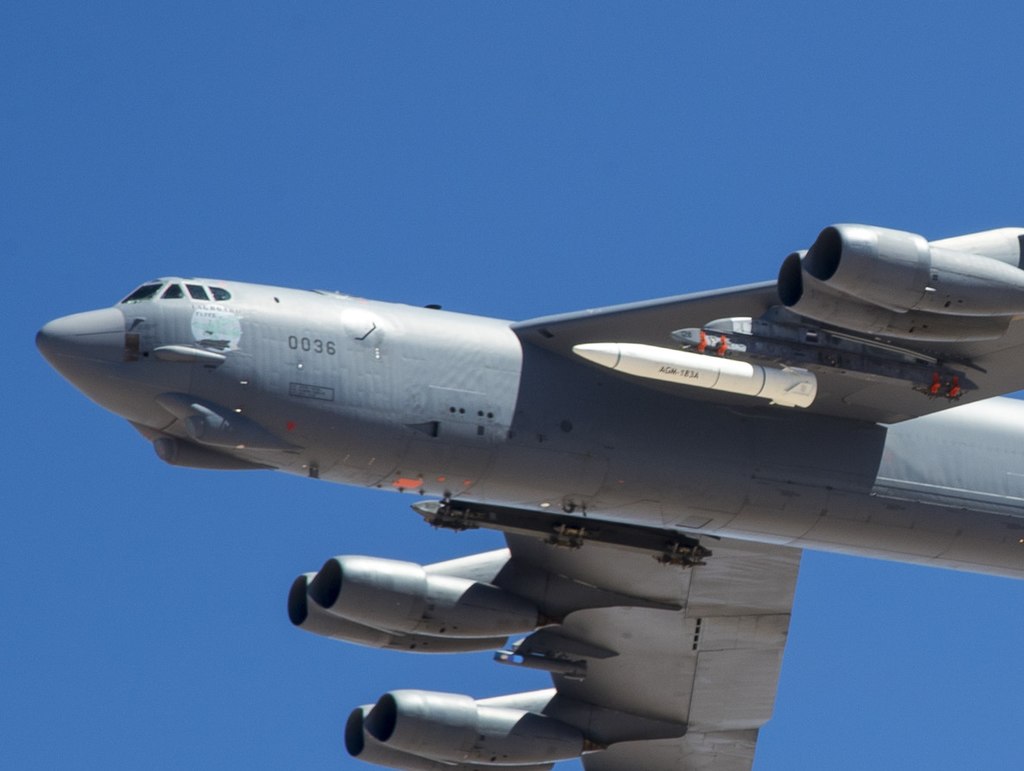In a move reflecting the United States’ efforts to bolster its hypersonic capabilities, the US Air Force is actively pursuing enhancements for its B-52H bombers to accommodate an increased payload of hypersonic missiles.
Russia ‘Doubles’ Su-57 Production; Ukraine’s F-16 Fighters Likely To Face The Wrath Of RuAF Stealth Jets
The initiative highlights the importance of swiftly ensuring the readiness of the B-52 fleet to deploy hypersonic weapons in the future.
In a recent contracting notice, the Air Force disclosed its plans for adapting B-52 pylons in conjunction with developing a new conventionally-armed air-breathing hypersonic cruise missile.
The B-52 bombers under Air Force Global Strike Command (AFGSC) are anticipated to be key launch platforms for these hypersonic missiles, expected to be operational by 2027. The pylon is likely to be employed for carrying the Hypersonic Attack Cruise Missile (HACM) on B-52s.
The November contracting notice reveals AFGSC’s pursuit of a new conventional High-Speed, Air-breathing cruise missile with a range exceeding 1000 miles. However, the challenge lies in surpassing the capacity of the existing traditional weapons pylon and Heavy Stores Adapter Beam (HSAB) currently used by the B-52.
To address this limitation, the Air Force is exploring alternative methods for missile carriage on the B-52, including the potential repurposing of the existing SUU-67/A Aircraft Pylon for conventional use.
Thus, to progress these developments, the Air Force is seeking a company to conduct a feasibility study and devise a modification plan for the SUU-67/A, aligning it with the enhanced requirements.

If successful, this phase could lead to constructing a physical prototype and subsequent flight testing, marking a crucial step in the USA’s efforts to bolster its hypersonic capabilities.
The Air Force emphasized that the ongoing initiative to repurpose the SUU-67/A is crucial to maintaining optimal carriage capability for cruise missiles on the B-52.
Without this modification effort, the Air Force Global Strike Command (AFGSC) foresees a significant reduction in the ability to carry these advanced missiles.
Currently, the B-52 configuration includes the internal carriage of eight missiles and an additional twelve missiles on external underwing pylons, each capable of accommodating six missiles.
As stated in the notice, the lack of a suitable external pylon would lead to a significant 60% decrease in the B-52’s total capacity to carry these crucial cruise missiles.
In May, Boeing also announced that it had developed a new pylon, suggesting a proposition to the Air Force for transferring the testing of hypersonic missiles from the B-52 to the B-1.
This innovative pylon for the B-1 bomber comes with the benefit of potentially increasing the aircraft’s munition-carrying capacity by 50 percent for various existing weapons.
US Trails China In Hypersonic Advancements
The notice specifically highlighted the critical nature of the development, emphasizing its importance in anticipation of potential adversaries and conflicts in the Pacific region. The intention is to ensure the capability to deploy dozens of cruise missiles in mass attacks against hostile forces.
The Air Force has been unequivocal in expressing the strategic importance of hypersonic weapons in its future warfighting plans. This emphasis is particularly evident in its considerations for potential conflicts with near-peer adversaries, notably China or Russia.
Both of these nations have already deployed their hypersonic missiles. They are actively engaged in further development of additional types, underscoring the urgency and significance of the US Air Force’s pursuit of hypersonic capabilities.
These lethal weapons combine the speed of a ballistic missile with the agility of a cruise missile. Their capability to maneuver across different altitudes and azimuths makes them highly elusive and challenging to detect. There is hardly any air defense system in the world that can effectively intercept hypersonic weapons.
Experts have long contended that the United States lags behind China in developing hypersonic weapons, and this assessment may hold. In 2021, China conducted a test of a hypersonic, nuclear-capable weapon, catching many in the defense community off guard.
This event underscored China’s remarkable progress in the field of hypersonic and highlighted the advanced capabilities they have achieved in this domain. However, the United States has faced numerous setbacks in developing hypersonic weapons.
Earlier this year, the Air Force decided to discontinue further development of the AGM-183A Air-Launched Rapid Response Weapon (ARRW), citing a troubled testing history. Instead, the focus has shifted towards prioritizing the Hypersonic Attack Cruise Missile (HACM) development.
- Contact the author at ashishmichel@gmail.com
- Follow EurAsian Times on Google News